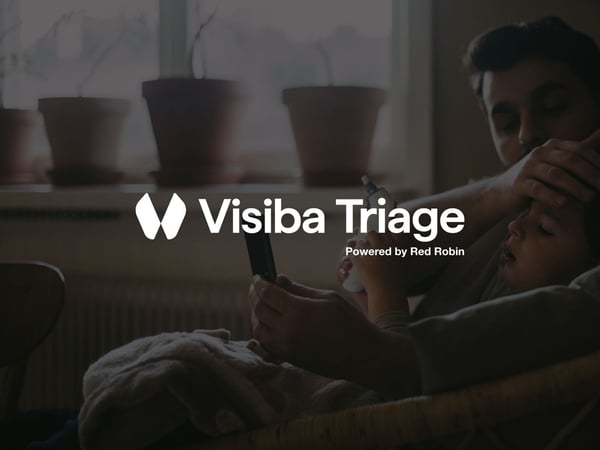AI triage is currently being intensely discussed within primary care. Even though the technique is still in its infancy, many argue that we need to get on board now and learn how to integrate AI-based tools for improved demand management. One of these advocates is Minna Haanpää, a nurse specialising in occupational health and part of Visiba’s medical team. We talked with her to understand how AI-based triage tools, when applied correctly, can support the work of nurses and clinical staff today.
Hi Minna! What is your perception of how AI triage can support clinical staff, such as yourself?
It simply saves time. You don’t have to spend valuable clinical resources to collect information about the patient’s conditions. Instead, this information is served to you. Knowing more about why the patient is seeking care makes the appointment more focused since you already have valuable information to build on. It can also give guidance for deciding on the next step and help prioritise the incoming flow. Integrated with messaging functionality, it also allows us to handle several patient cases in parallel, thus helping more patients without blocking the telephone lines. And then we need to look at it from the patient’s side too. Patients cannot be expected to wait in endless telephone queues when trying to contact healthcare. In my experience, patients are quite happy to answer questions through an automated tool before the appointment, especially if they feel that the assessment is tailored to their specific case.
Why is it essential to find new ways to manage patient demand?
Well, it is no news that care demand is exceeding care supply. The same was true also before the pandemic. In Sweden, when you contact your GP, your first point of contact is traditionally a nurse. The nurse will make the initial evaluation and, based on this assessment, decide on the next steps. There are several problems with this way of working. First, there is never sufficient telephone time or appointment timeslots to meet actual demand. Secondly, the nurse never knows who is next – or last – in the line and consequently which patient needs to see the doctor more urgently. Third, administrative tasks and telephone service block valuable time, time that is more wisely spent tending to patients who need it.
Why are medical history assessments and triage an excellent place to start when introducing AI?
Why? Oh, because we desperately need to improve demand management. There is not sufficient healthcare staff to keep up with the need for care. Therefore, we need to find ways to work more efficiently. As I described previously, nurses do most of the initial triaging in Sweden. It is more efficient from the GPs’ point of view. But there is a lack of nurses, and quite often those working in GP receptions are at the beginning of their careers and, therefore, less experienced. An AI-triage tool can enhance their ability to make correct decisions, whether the patient’s case is urgent, can wait for a week, or even be solved through referral to self-care advice instead of booking a virtual or physical visit to a GP.
The majority of healthcare staff are suffering from a high workload. Can an AI triage tool reduce this pressure?
Healthcare staff is generally suffering from not being able to see enough patients. The healthcare system is not dimensioned for the increasing number of patients and the severity of conditions. People live longer, and quite often, are sicker or suffer from several diseases. And then you add the cognitive load to the calculation; that is how much information healthcare staff need to process daily. Then it becomes evident that a powerful AI triage tool is also quite helpful for a more experienced team. Most patients contacting the GP suffer from less severe conditions, but there can be more severe problems hiding behind the obvious, such as cancer or a yet not discovered heart disease. For the general practitioners, being provided with probable differential diagnoses can help unburden some cognitive load and reduce unnecessary stress.
There is still some scepticism toward the use of AI in healthcare. How can we make more people understand the value?
In many ways, it is all about change management and courage. Within healthcare, we always look at avoiding risk. We don’t want to harm patients, but we also know there is always a risk. As a supplier developing AI for healthcare, we must understand the complexity: the pressure on staff, the focus on risk avoidance, and the anxiety to do wrong. We need to provide the benefit calculation, which stipulates that yes, we know that you are overworked and that this change may initially put even more pressure on you, but if you give it time, you will gain so much. And we need to be clear that it is beneficial to the healthcare organisation and the clinical staff who will experience significant improvements in demand management and reduced cognitive stress. And we must also address the benefits for the patients, who will receive a more person-centric, higher quality and accessible healthcare. We still have a way to go, but we are on a good path!


